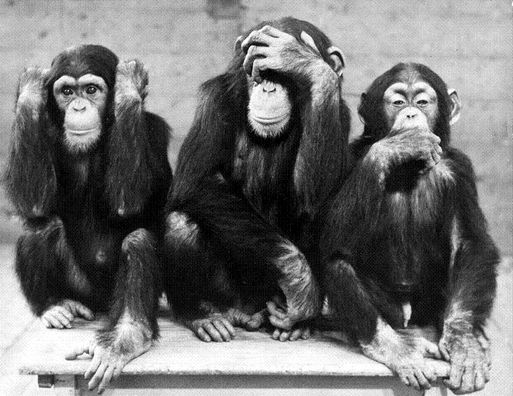Monkey See, Monkey Do – Canada’s Charitable Sector is Broken
July 10, 2020 | Blog
If the recent example of the funding relationship, and subsequent cancellation of the funding contract between WE Charity and the Canadian Federal government has showcased anything; it laid bare what most philanthropists and charity directors have known for decades – the Canadian charitable system is broken. This broken system highlights three distinct problems charities face in managing donor relations:
- The charitable accountability system is inconsistent between organizations and funders;
- There was a lack of due diligence and vetting on WE and potentially other organizations that have entered into government partnerships; and
- An inconsistent standard of leadership.
The charitable sector is comprised of funders, charities, non-profits, charity watchdogs and government agencies. With all of these players on the field what led to this breakdown? How can it be mitigated in the future? What is the appetite for change by any government on how money flows within the charitable sector?
First off, let’s explore the charitable sector framework. As it is this framework that reinforces how this situation became possible in the first place.
Society’s 3 Legged Stool

Our society is built upon three distinct legs – the for-profit sector, the non-profit/charitable/ voluntary sector and government. For a long time, society assumed the second leg as being a bit shorter, perhaps a bit spindlier, resulting in a somewhat wobbly stool. Over the years attempts have been made to make that leg a bit stronger by establishing a more robust reporting system, the creation of charity watchdogs and a more professionalized charitable sector workforce. The problem all the while was thinking that it was the non-profit leg of the stool that was broken and not the floor upon which the stool was resting.
The way we manage our social systems is through a bifurcated model at the Federal level – an organization is either a for-profit company, or a registered charity. This bifurcation is not just in the corporate structures, but also in how these organizations are reviewed and reported upon. On top of this, there is no consistent reporting and evaluating criteria of charities. The questions asked by the CRA on the charity annual return form would not uncover what ended up happening between WE, Canada’s donor community, and the Federal Government. The closest questions on this annual return that may lead to further investigation of a direct relationship between a funder and an organization include questions like:
- Did the charity compensate any of its directors/trustees or like officials or persons not at arm’s length from the charity for services provided during the fiscal period (other than reimbursement for expenses)? This is a yes or no question and no further information is required to support the answer.
- Did the charity use any of its tax receipted donations on behalf of another organization? This is also a yes or no answer and once again no further information is required. As well, this is only for tax receipted funds meaning that a contribution that hasn’t received a tax receipt (i.e. payment from a government agency) would generate a NO answer.
- Total revenue received from federal government
- Specify the types of expenditures reported – This excludes things associated with general operating expenses like professional and consulting services, occupancy costs, etc.
Adding to the problem, is that the report is filed at the end of the year therefore most of this information would not be publicly available until the filing occurred. This publication could be months after the transaction occurred or the relationship was established. Which leads to the second point on lack of due diligence and transparency.
Transparency & Timeliness of Charitable Sector Reporting
People are wringing their hands over WE being a sole-source solution to the student granting program and youth unemployment problem. We should unpack how and why this type of agency would even be considered, and what expectations taxpayers have of their government in deploying capital to social programs.

In order to be more transparent and effective in how partnerships and funding arrangements are made using taxpayer dollars we have to be consistent and timely in partnership vetting and selection analysis.
The Canadian government, under all parties, has a history of off-loading social programs to the charitable sector to manage. From disaster relief support through the Red Cross, to elder care and community support through the United Ways of Canada. In fact, the CRA has a whole section on how organizations can collaborate. You can read more about this in our whitepaper on private philanthropy collaborations. What makes funding the WE program so disingenuous is that the government and charity leadership did not follow the guidelines laid out by the Charities Directorate. This by-pass of the due diligence process is what allowed for the original granting and deployment of capital to WE.
Layered on the amount of money that would flow through WE are the direct relationships between the PMO and the charity. There is nothing that says that our leadership and family members of our leadership cannot be philanthropic or even paid ambassadors to organizations. What is at play here is a possible abuse of power by putting personal philanthropic interests ahead of the government’s interests. Had our government done proper due diligence by following the CRA guidelines resulting with WE as the ideal implementation partner, the public rankor and opposition for this program would have been mitigated. There would be clearly articulated reasons and evidence of the evaluation process which would include an up-front public disclosure of the personal ties between the Trudeaus and WE.
Which leads me to the third point – the inconsistency in applying policy to the charitable sector.
Hear No Evil, See No Evil, Speak No Evil Charitable Sector Policies
Most organizations follow the rules. It is the very few bad apples that seem to spoil the barrel. The CRA is NOT mandated to do a sector analysis on program implementation, impact of solutions, board governance and operational effectiveness. However, this is the government agency asking the questions of charities in their annual returns. We have a mechanism to ask questions, we just are not asking the right questions. As a result, we cannot audit organizations appropriately. We will always have organizations whose boards don’t function properly, whose management is not held accountable and increasingly creates wasteful duplication in the sector.

If we really wanted to know what is working and what isn’t, we would stop asking questions around how much is spent on fundraising and start asking more meaningful questions of organizations with a mechanism to follow-up and review.
Some other questions to consider:
- Provide the names and contact information of organizations (for-profit or non-profit) you have partnered with on a program in the last year.
- Provide us with an example of a program, dollars spent and how, and what you achieved (outputs – numbers, impacts – depth or shift within your organization or the issue you are addressing).
- What is the impact on your community or client base of not providing the services you offer? Who else/which other organizations in your sector offer the same services?
- Are you at 100% capacity? Do you have a waiting list? How are you managing your wait list – are you referring them to other agencies, are you providing a pared down offering until more space is available…
- Do you have members of government involved either at the board, advisory, ambassador or major donor level? Please state in what capacity and if a major donor, please provide your publicly stated levels of giving.
Until we are asking the right questions we will continue to have the same issues of charitable sector mismanagement, tax payer frustrations, and donor fatigue.